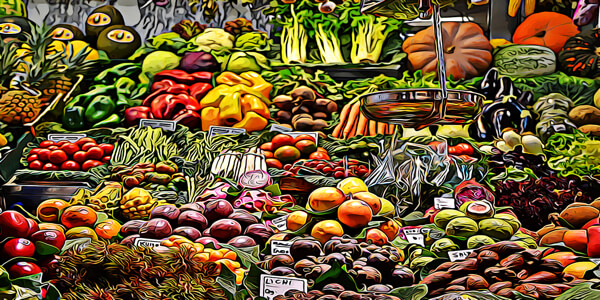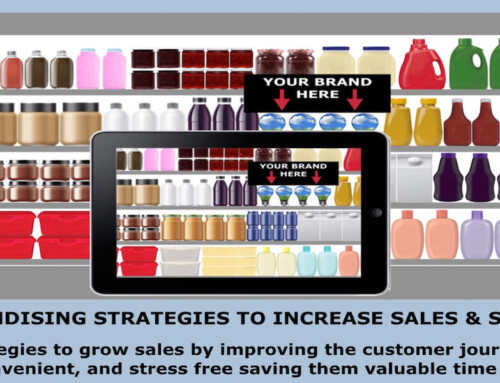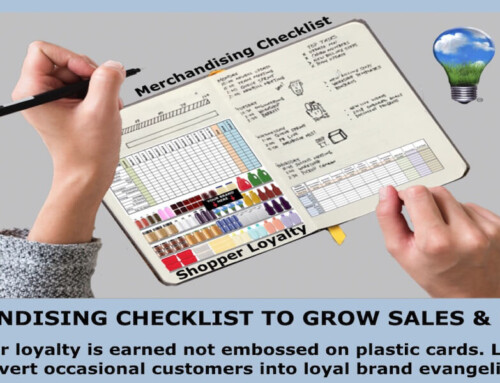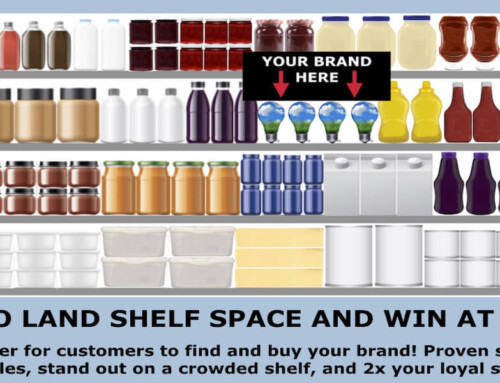Effective merchandising is essential to the long term health of your brand. Retailer shelves are frequently the first impression consumers have of your products. Make it a good one!
Shelf Management
Effective merchandising includes shelf management and product placement on retailer shelves. It maximizes category sales, drives shopper foot traffic, increases market shopper basket size, and it can give retailers a sustainable competitive advantage in their market. A retailer's merchandising strategy communicates their marketing strategy to shoppers; great selection, fair prices, health-focused, community involved, etc.
Effective self-management strategies can be used to communicate a consistent message to customers, highlighting your commitment to meet their needs. There is where real shopper loyalty exists – consumers what to shop retailers who best meet their needs. It can differentiate you from your competition. Product placement is critical. Consumers want stores with a good selection that are easy and friendly to shop and they want their favorite brands at a fair price.
Getting your product featured on the retailer's shelf in the right place and at the right stores is key to any brand's success. Most retailers merchandise items grouped by brand. A more effective strategy would be to merchandise items around the way shoppers use the products – shopper need states. This strategy allows consumers to easily compare similar items.
Product assortment and segmentation
Segmenting breaks up the category to make it easier to shop by style, quality, flavor, scent, color, type, etc. New mothers, for example, will find it easier to shop the diaper category if it's segmented by baby size (newborn, infant, toddler, etc.), diaper quality (super-premium, premium, and economy), and then by brand.
Another component of placement is product assortment. Customers want the top items available in the market in addition to specialty or niche items that meet their needs. The goal is to have a broad assortment without too many duplicates because customers make judgments about retailers based upon assortment: too few items and they perceive the assortment to be poor and too many items cause confusion. The proper mix includes top-selling items available as well as specialty items that differentiate your store.
Manufacturers need to work closely with retailers to ensure that each item has enough holding power (items available for sale on the shelf) to support consumer takeaway. A common strategy is for a retailer to have several days of supply of each item available on the shelf.
For example, if an item comes 12 to a case and they sell an average of two a day, a retailer may want to have enough space on the shelf to hold 1.5 cases of product. The goal is to have no additional back-stock while avoiding out-of-stocks. In this example, the retailer could reorder the item one case a week. Retailers need to enforce this discipline-at-shelf strategy across each of their stores.
This is one of the main reasons the practice of category management started. Its mission is simply to reduce out-of-stocks, maximize inventory efficiency, increase consumer takeaway, and increase the profitability of a brand. Category management has now evolved to fully understanding consumer buying habits and helping brands meet consumers' needs.
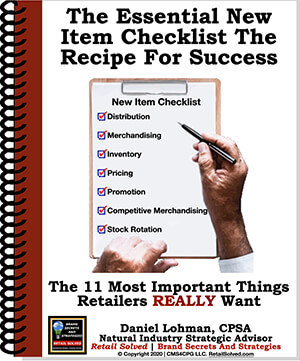
Want A Competitive Edge? The Recipe For Success
New product innovation is the lifeblood of every brand. New products fuel sustainable growth, attract new shoppers and increase brand awareness. Know the critical steps to get your product on more retailer’s shelves and into the hands of more shoppers.
Empowering Brands | Raising The Bar
Ever wish you just had a roadmap? Well, now you do!
Don’t miss out on all of these FREE RESOURCES (strategic downloadable guides, podcast episodes, list of questions you need to be asking, and know the answers to, the weekly newsletter, articles, and tips of the week. You will also receive access to quick and easy online courses that teach you how to get your brand on the shelf, expand distribution, understand what retailers REALLY want, and address your most pressing challenges and questions.
All tools that you can use, AT NO CHARGE TO YOU, to save you valuable time and money and grow your sales today!
Image is the property of CMS4CPG LLC, distribution or reproduction is expressively prohibited.

